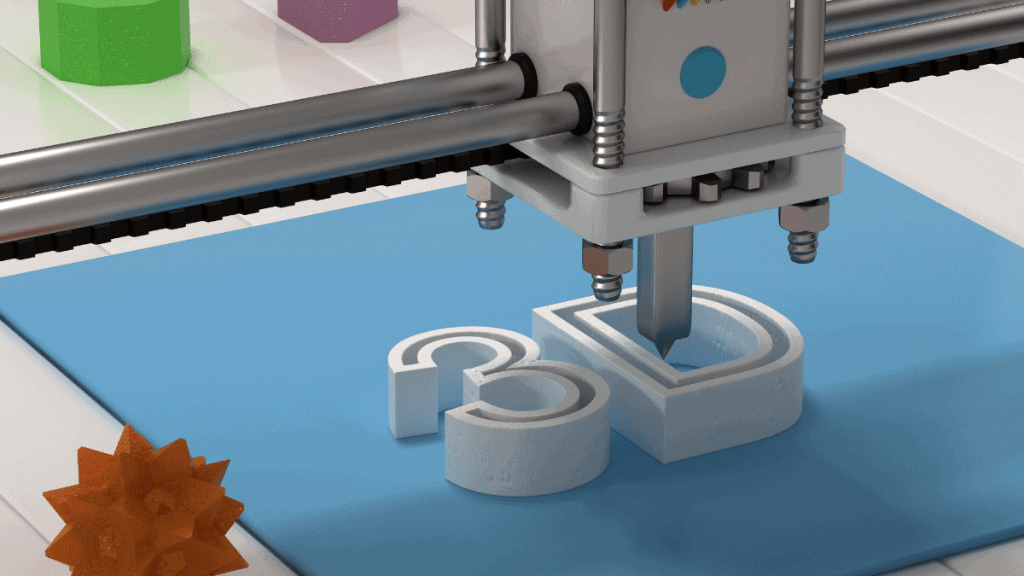The 3D printing market is bursting with value. At a market share of $51.77 billion, this tech derived from the processes of additive manufacturing is experiencing a heyday, and for good reason. 3D printing has a lot to offer the efficiency and sustainability of modern business.
Table of Contents
ToggleYet even with the burgeoning success of this technology, many may find it hard to imagine all the uses of additive manufacturing across industries. From streamlining product design to the integration of non-traditional materials, 3D printing has the potential not just to cut costs and enhance efficiency but to save human lives.
The future of business success may just be dependent on 3D printing tech. Here’s what you should know.
3D Printing in Modern Business
3D printing has been a transformational technology of the modern era, used to build better products with a wide range of materials. It is a manufacturing process defined by its use of digital 3D models made real by overlaying materials bit-by-bit through additive construction. For such a simple concept, the possibilities enabled by 3D printing technology are widespread.
In manufacturing, healthcare, and technology, 3D printing has already been applied to build better devices for a swath of needs. From aerospace parts to human organs, these innovations are transforming outcomes across industries.
Here are a few real-world examples.
In Manufacturing
3D printing is taking off, and it could be taking you with it. The new Boeing 777X, for example, uses two GE9X engines, each of which incorporates over 300 3D printed parts. Because additive manufacturing allows for the more efficient composition of parts in one smooth process, these engines are lighter and more fuel-efficient than anything previously possible. By applying 3D printing to their manufacturing process, Boeing was able to reduce costs by 10% while lowering fuel consumption of the 777X by 12%.
In Healthcare
3D printing is also one of the new powerful technologies shaping the future of healthcare. The implications of this tech have been demonstrated in the recent developments out of Tel Aviv University, where a team of scientists successfully printed a 3D replica human heart using the patient’s own biological materials. 3D printing means patient cells can be used to construct new organs, making for safer transplantations. As this tech continues to develop, we’ll see massive strides in organ replacement without the need for expensive long-term care in an attempt to mitigate bodily rejection.
In Tech
The technological implications of 3D printing are being discovered all the time. Because of the nature of additive manufacturing, materials and alloys that could never exist in nature are being designed and implemented into smart components. For example, Lawrence Livermore National Laboratory’s Additive Manufacturing Initiative created materials through 3D printing that shrink rather than expand when heated. The result can mean products like dental fillings that resist cracking with the potential for innumerable future innovations.
With applications like these for 3D printing in modern business, the sky’s the limit on what is now possible. But are the benefits really worth the investment in this tech?
What 3D Printing Tech Offers Efficiency and Sustainability
Like two sides of the same coin, efficiency and sustainability are both products of effective additive manufacturing processes. This technology is already bringing about cost savings through streamlined part manufacturing, energy efficiency, and material quality. As we move into 2021 and beyond, these benefits will only grow, making for a faster, cleaner future.
The innovations in the Boeing 777X construction alone have proven that travel can be both faster and cheaper through additive manufacturing. With parts up to 50% lighter, emissions of this airplane are falling to 29% below the CAEP/8 limits for engines. As this tech continues to improve, the impact of greenhouse gasses on the environment can be significantly reduced, leading to a sustainable future for everyone.
And the best part is that 3D manufacturing does not have to come at an economic impact. In fact, the reduction in waste and materials that comes with additive manufacturing is a saving in its own right. Add to this the importance of environmental awareness when considering consumers, and you have a recipe for economic success atop efficiency and sustainability. With as many as 87% of Americans willing to purchase from a company that advocates for causes they care about, integrating sustainable additive manufacturing can be a marketing boost.
The Future of 3D Printing in Business
As additive manufacturing continues to redefine the future of production as a whole, businesses can look now to the benefits this technology offers to efficiency and sustainability. From airplane engines to human hearts, 3D printing is a game-changer for a healthy and environmentally-friendly industry the world over.
While it is impossible to gauge the scale at which this tech will take over production, continued innovation of 3D printers will certainly have profound implications on a wide range of markets. Business leaders looking to produce an edge over their competitors would do well to explore the implications of integrating this technology today. In the future, everyone might just be using it.




